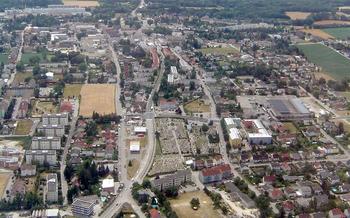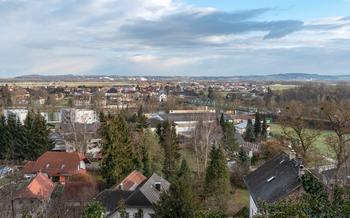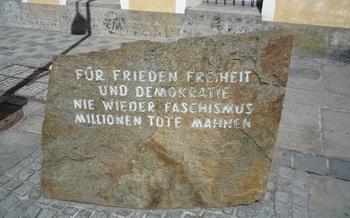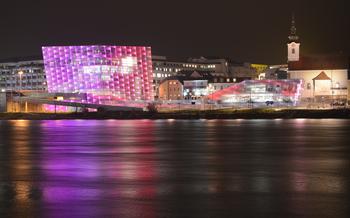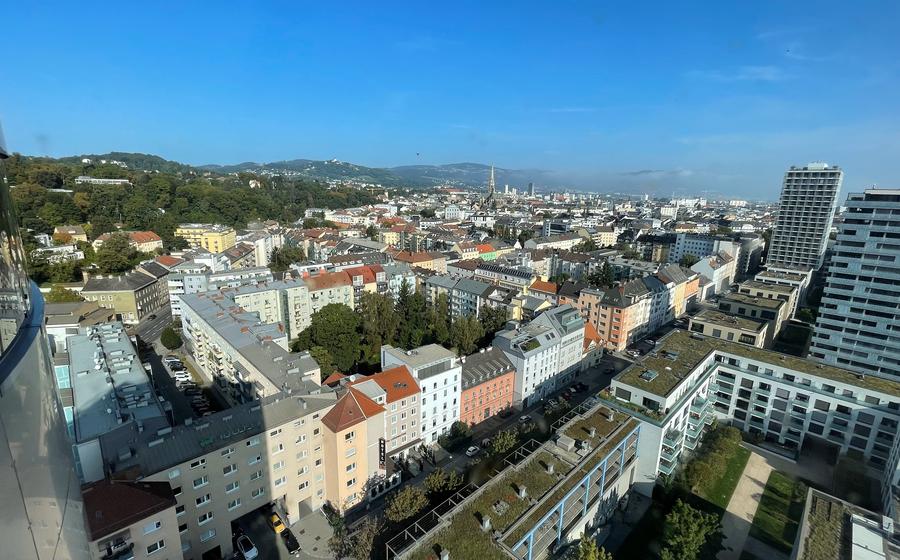
Mauthausen Memorial (near Linz)
- Visitor Information and Accessibility
- Exhibitions and Memorial Areas
- Touring the Camp Grounds
- Voices of Survivors and Historical Documents: Bearing Witness to the Atrocities
- Confronting the Legacy of the Holocaust
- Honoring the Victims' Memory
- Educational Programs and Workshops
- Preservation and Conservation Efforts
- Collaboration and Partnerships
- Mauthausen Memorial Museum
- Reflection and Remembrance Garden
- Educational Resources and Publications
- Insider Tip
Visitor Information and Accessibility
Visiting the Mauthausen Memorial is a profound and educational experience that requires careful planning and preparation. Here's some essential information to help you plan your visit:
-
Location and Accessibility: The Mauthausen Memorial is situated near the town of Mauthausen, approximately 20 kilometers east of Linz, Austria. It is easily accessible by both public transportation and private vehicles. Regular trains and buses connect Linz and Mauthausen, making it convenient for visitors to reach the memorial.
-
Guided Tours: Guided tours are available for visitors who wish to gain a deeper understanding of the history and significance of the memorial. These tours are led by experienced guides who provide insightful commentary and historical context throughout the visit. Guided tours are highly recommended to make the most of your experience.
-
Hours of Operation: The Mauthausen Memorial is open to the public from Tuesday to Sunday, with specific hours varying depending on the season. It is advisable to check the memorial's official website or contact them directly to confirm the exact hours of operation before your visit.
-
Admission Fees: Admission to the Mauthausen Memorial is free of charge. However, donations are welcome and greatly appreciated to support the memorial's educational and research initiatives. Your contribution helps preserve the site and ensure its continued operation as a place of remembrance and learning.
Exhibitions and Memorial Areas
The Mauthausen Memorial houses a permanent exhibition that unveils the harrowing history of the camp. Through artifacts, photographs, and personal accounts, it offers a comprehensive insight into the camp's daily operations, the atrocities committed, and the resilience of its prisoners. Visitors can explore the various sections of the exhibition, learning about the camp's establishment, the diverse groups of prisoners who endured its horrors, and the resistance efforts that emerged within its walls.
The memorial also features temporary exhibitions that delve deeper into specific aspects of the camp's history or explore related themes. These exhibitions showcase new research, highlight the experiences of individual prisoners or groups, and provide a fresh perspective on the broader context of the Holocaust. By presenting a dynamic and evolving range of exhibitions, the memorial ensures that visitors have the opportunity to gain a deeper understanding of the camp's history and its lasting impact.
In addition to the exhibitions, the memorial features several memorial areas dedicated to honoring the victims and commemorating their stories. A central memorial site within the camp grounds serves as a place of remembrance and reflection for visitors to pay their respects and contemplate the immense suffering endured by the prisoners. Other memorial areas include the "Wall of Names," which lists the names of thousands of victims, and the "International Memorial," which honors the victims of different nationalities who perished at Mauthausen. Through these memorial spaces, the site provides a tangible connection to the individuals who suffered and lost their lives during the Holocaust.
Touring the Camp Grounds
Barracks and Living Conditions
Within the Mauthausen Memorial, visitors can explore the preserved barracks where prisoners were forced to live. These cramped and unsanitary quarters provide a glimpse into the harsh conditions endured by those incarcerated at the camp. The bunks, arranged in tight rows, demonstrate the extreme overcrowding that characterized the camp's living conditions. Visitors can also observe the lack of privacy and basic amenities, which contributed to the prisoners' physical and psychological suffering.
Watchtowers and Security Measures
The watchtowers that dot the perimeter of the camp serve as a chilling reminder of the oppressive nature of the Mauthausen regime. These structures allowed guards to maintain constant surveillance over the prisoners, ensuring that any attempts at escape or rebellion were swiftly thwarted. The watchtowers were equipped with searchlights and machine guns, further intimidating and controlling the camp's population.
Gas Chambers and Crematorium
One of the most haunting aspects of the Mauthausen Memorial is the presence of gas chambers and a crematorium. These facilities symbolize the systematic extermination of prisoners that took place at the camp. Visitors can learn about the horrific process by which thousands of individuals were murdered and their bodies disposed of. The memorial serves as a powerful reminder of the atrocities committed during the Holocaust.
Voices of Survivors and Historical Documents: Bearing Witness to the Atrocities
The Mauthausen Memorial preserves and shares the stories of those who endured the horrors of the camp. Survivor testimonies and historical documents provide a powerful and deeply personal account of the atrocities committed within its walls. Visitors can listen to recorded interviews with survivors, read their written accounts, and view photographs that capture their experiences. These firsthand accounts offer a profound glimpse into the resilience and suffering of the victims, shedding light on the unimaginable horrors they faced.
Historical documents, including official records, correspondence, and personal belongings, further corroborate the atrocities committed at Mauthausen. These documents provide tangible evidence of the systematic brutality and dehumanization that characterized the Nazi regime. By preserving and sharing these testimonies and documents, the memorial ensures that the victims' voices are heard and their stories are never forgotten.
Confronting the Legacy of the Holocaust
The Mauthausen Memorial serves as a poignant reminder of the atrocities committed during the Holocaust, prompting visitors to confront the legacy of this dark chapter in history. The memorial encourages reflection on the consequences of hatred, intolerance, and the dangers of extremism. It challenges visitors to grapple with the ethical and moral questions raised by the Holocaust, urging them to learn from the past and work towards a future free from such horrors. The memorial's mission is not only to commemorate the victims but also to foster dialogue and understanding, promoting a culture of tolerance and respect for human rights.
Honoring the Victims' Memory
The Mauthausen Memorial is dedicated to preserving the memory of the victims who suffered and perished within its walls. Commemorative ceremonies and events are held throughout the year to honor their lives and pay tribute to their families. These ceremonies often include speeches by survivors, readings of victim testimonies, and musical performances.
Within the camp grounds, several monuments and memorials have been erected to commemorate the victims and their experiences. The most prominent of these is the Mauthausen Memorial Wall, which bears the names of over 100,000 victims who died at the camp. Other memorials include the Jewish Memorial, the Soviet Memorial, and the Memorial to the Spanish Republicans, each dedicated to specific groups of victims who were targeted by the Nazi regime.
These memorials serve as a constant reminder of the atrocities that took place at Mauthausen and the profound suffering endured by its prisoners. They invite visitors to reflect on the individual lives lost and to honor their memory by working to prevent such atrocities from ever happening again.
Educational Programs and Workshops
The Mauthausen Memorial also offers a range of educational programs and workshops to promote understanding and raise awareness about the Holocaust and its consequences. These programs are designed for students, teachers, and the general public, and aim to provide a comprehensive insight into the history of the camp and its legacy.
Workshops and seminars are conducted by experienced educators and historians, and cover various topics related to the Holocaust, including the rise of Nazism, the operation of the camp system, and the experiences of survivors. These programs encourage critical thinking, promote dialogue, and foster a deeper understanding of the atrocities committed during this dark period in history.
By participating in these educational initiatives, visitors can gain a deeper understanding of the Holocaust and its impact on individuals, communities, and society as a whole. The programs also provide a platform for reflection and discussion, helping to combat intolerance, promote human rights, and build a more just and compassionate world.
Preservation and Conservation Efforts
The Mauthausen Memorial is committed to preserving and maintaining the historical integrity of the camp site. Extensive conservation efforts have been undertaken to protect the remaining structures, artifacts, and memorials from the ravages of time and the elements.
The memorial's conservation team works diligently to restore and maintain the barracks, watchtowers, crematorium, and other buildings within the camp grounds. They employ specialized techniques and materials to ensure the authenticity and accuracy of their work, preserving the site's historical significance for future generations.
One of the challenges faced by the conservation team is the natural deterioration of the camp's structures due to age and exposure to the elements. They work to mitigate these effects through regular maintenance, repairs, and protective measures.
Another challenge is the need to balance preservation with accessibility. The memorial strives to make the site accessible to visitors while maintaining its historical integrity. This involves finding creative solutions to accommodate visitors without compromising the authenticity of the site.
Despite these challenges, the Mauthausen Memorial has made significant strides in preserving and conserving the camp grounds. Their efforts ensure that this important historical site remains a powerful reminder of the atrocities committed during the Holocaust and a place of remembrance and reflection for visitors from around the world.
Collaboration and Partnerships
The Mauthausen Memorial actively collaborates with educational institutions, museums, and organizations to promote research and education on the Holocaust. These partnerships enable the memorial to share its resources, expertise, and historical artifacts with a wider audience.
Collaborations with universities and research institutions facilitate academic research on various aspects of the camp's history, including the experiences of prisoners, the Nazi regime's atrocities, and the aftermath of the Holocaust. These partnerships support the production of scholarly publications, dissertations, and research projects that contribute to a deeper understanding of this dark chapter in human history.
The memorial also collaborates with museums and other cultural institutions to develop joint exhibitions, educational programs, and public events. These collaborations aim to raise awareness of the Holocaust and its impact on contemporary society. By sharing resources and expertise, the Mauthausen Memorial and its partners contribute to a collective effort to preserve the memory of the victims and promote human rights education.
International recognition and support for the memorial's work have come from various organizations and governments. UNESCO has designated the Mauthausen Memorial as a World Heritage Site, recognizing its outstanding universal value and its significance as a place of remembrance and education. The memorial receives support from governments and organizations worldwide, including the Austrian government, the United Nations, and the European Union. This international recognition highlights the importance of preserving and commemorating the site and its role in promoting peace and understanding.
Mauthausen Memorial Museum
The Mauthausen Memorial Museum serves as a poignant reminder of the atrocities committed at the Mauthausen concentration camp during World War II. The museum's exhibits and displays take visitors on a journey through the camp's history, from its establishment to its liberation. Visitors will learn about the camp's role in the Nazi regime's system of oppression and the daily lives of the prisoners who were forced to endure unimaginable suffering.
The museum's collection includes a variety of artifacts, documents, and photographs that provide a deeper understanding of the camp's history. Interactive exhibits and multimedia presentations enhance the visitor experience, allowing them to connect with the stories of individual prisoners and gain a deeper appreciation for the horrors that took place within the camp's walls.
Through its exhibits and educational programs, the Mauthausen Memorial Museum plays a crucial role in preserving the memory of the victims and ensuring that the atrocities committed at Mauthausen are never forgotten.
Reflection and Remembrance Garden
Amidst the somber atmosphere of the Mauthausen Memorial, visitors find solace and tranquility in the Reflection and Remembrance Garden. Designed as a space for contemplation and reflection, the garden offers a serene sanctuary where one can pause and remember the victims of the Holocaust.
The garden's tranquil ambiance is created by lush greenery, water features, and sculptures that evoke a sense of peace and remembrance. Visitors can stroll along the winding paths, surrounded by carefully manicured gardens, and take a moment to reflect on the atrocities that occurred within the camp's walls.
The garden's centerpiece is a striking sculpture titled "The Torn Wings," a poignant symbol of the suffering and loss experienced by the camp's prisoners. The sculpture depicts a pair of broken wings, evoking the shattered hopes and dreams of those who perished at Mauthausen.
Water features throughout the garden add a calming element, inviting visitors to pause and listen to the gentle sounds of flowing water. The water symbolizes the tears shed by the victims and their families, as well as the cleansing and healing power of remembrance.
Inscriptions and quotes from survivors and poets are scattered throughout the garden, providing visitors with moments of reflection and inspiration. These words serve as a reminder of the resilience and strength of the human spirit, even in the face of unimaginable suffering.
The Reflection and Remembrance Garden is a powerful and moving space that encourages visitors to confront the horrors of the Holocaust and to remember the countless lives that were lost. It is a place where one can find solace, pay tribute to the victims, and reaffirm the importance of peace, tolerance, and human rights.
Educational Resources and Publications
The Mauthausen Memorial also offers a range of educational resources and publications to further enhance visitors' understanding of the camp's history and the Holocaust. These resources include:
-
Publications and Materials: Visitors can purchase books, brochures, and other educational materials at the memorial's gift shop. These publications provide in-depth information on the camp's history, the experiences of prisoners, and the liberation of the camp.
-
Online Resources: The memorial's website and online platforms offer a wealth of additional information, testimonies, and educational materials. Visitors can access articles, videos, interactive exhibitions, and databases to deepen their knowledge and understanding of the Holocaust.
Insider Tip
For an unparalleled and educational experience, booking a guided tour of the Mauthausen Memorial is highly recommended. Guided tours offer a more in-depth understanding of the camp's history, providing insightful narratives and explanations. Make sure to reserve your spot in advance, especially during the peak tourist season, to avoid disappointment and secure your place on a guided tour.
Additionally, it is beneficial to conduct some research about the history of the Mauthausen concentration camp before your visit. Familiarizing yourself with the background, atrocities, and liberation of the camp will enhance your appreciation of the memorial and make your visit more meaningful. By delving into the historical context, you can gain a deeper understanding of the significance of this site and its role in the horrific events of the Holocaust.
